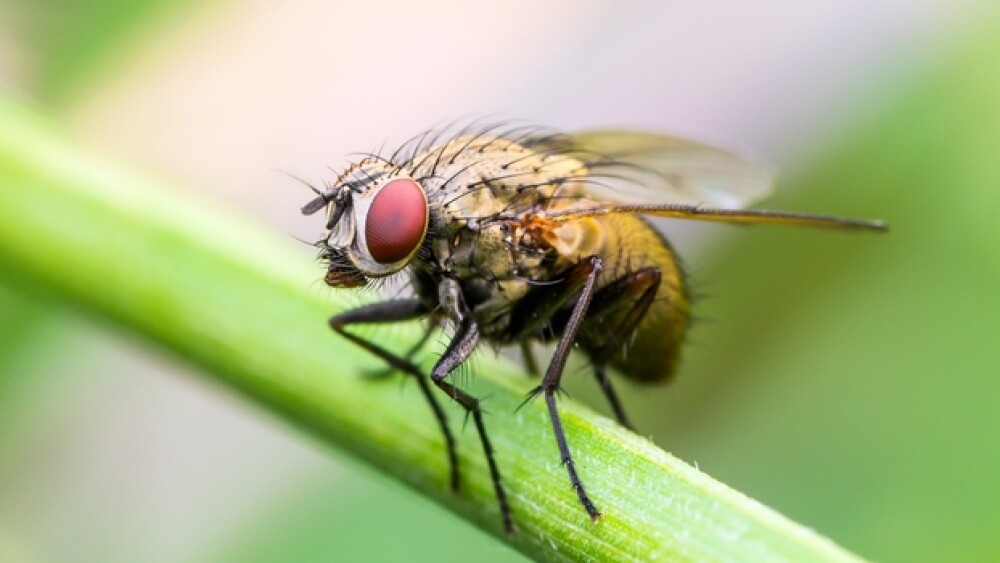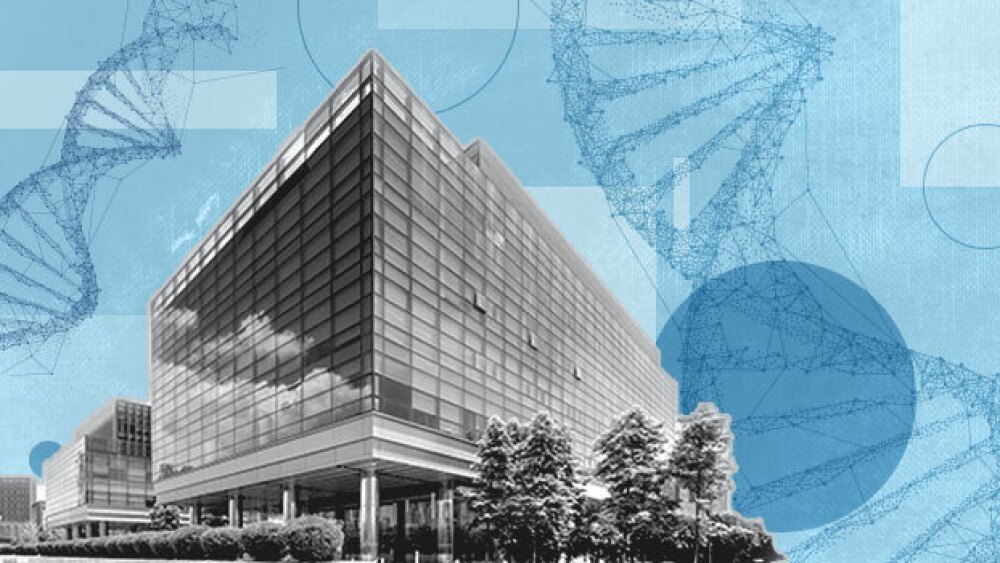When you think about personalized cancer care, those annoying fruit flies in your kitchen are likely not the first things that come to mind. But they are exactly what My Personal Therapeutics uses to create personalized cancer treatment combinations.
When you think about personalized cancer care, those annoying fruit flies in your kitchen are likely not the first things that come to mind. But they are exactly what the biotech company My Personal Therapeutics uses to create personalized cancer treatment combinations.
You may be wondering how fruit flies can help provide cancer treatment options. Basically, My Personal Therapeutics uses the unique genetic sequence information from a patient’s tumor and re-creates the genetically same tumor in a fruit fly. Then they can generate an army of hundreds of thousands of these tumor-bearing fruit flies (called ‘avatars’) and test many different FDA-approved drugs and drug combinations to see which most effectively keeps the fruit flies alive (essentially treating the cancer). These drug combinations are presented to the patient’s doctors, who ultimately decide which drugs would be best for the patient. A great video overview of their technology can be found on their website.
BioSpace spoke with Laura Towart, Founder and CEO of My Personal Therapeutics, to learn more about the company and how their fruit fly ‘avatar’ technology works. (Anything written in parentheses was added for clarification and not directly stated by Laura.)
What does My Personal Therapeutics focus on?
Laura: “My Personal Therapeutics is pioneering personalized cancer therapeutics. Our Personal Discovery Process (PDP) identifies highly precise combinations of FDA-approved drugs. All recommended treatment combinations will include a cancer drug and a non-cancer drug, making treatments less toxic and more affordable. The genomic information and drug treatment data collected are being used to develop TuMatch, an artificial intelligence-powered service designed to enable rapid and affordable personalized treatment recommendations. Our technology was pioneered at the Icahn School of Medicine at Mount Sinai Medical Center and is being commercialized globally in partnership with the institution.”
How does the Personal Discovery Process (PDP) work?
Laura: “The Personal Discovery Process starts with whole exome sequencing of a tumor biopsy and blood sample. Using this genetic information, we conduct unbiased identification of potential tumorigenic mutations and incorporate the identified mutations into fruit flies to serve as patient avatars. Using robotics, we then conduct a massive 400,000 fruit fly screen of more than 1,500 FDA-approved drugs, including non-cancer drugs, to identify specific drug combinations that significantly improve mortality in the fruit fly avatar population. We evaluate and identify drug combinations that allow the fruit flies to survive, effectively identifying personalized cancer treatments for individual patients. We then present the drug combinations to the patient’s oncologist and, potentially, tumor board who make the best treatment recommendation for the patient. PDP is the most comprehensive drug screening service for individuals with cancer.”
Why did you decide to use fruit flies?
Laura: “The fruit fly Drosophila melanogaster has been used for more than a century to understand basic principles of biology, including those that govern cell growth and proliferation both in physiological and pathological conditions. Most of the oncogenic signaling pathways are highly conserved between fruit flies and humans, making this organism perfectly suited for the creation of tumor-bearing animals tailored to a patient-specific genetic condition.
Fruit flies also inherently offer many advantages as an experimental animal model. Their short life cycle (about 10 days) and numerous offspring permit rapid research and generation of results, which is crucial when a cancer patient is waiting for treatment options. Their small size is important because we can use large numbers of these animals for drug screening in a very small space. In this way, every drug is tested in a huge number of flies, making the analysis feasible, reliable, and cost-effective due to using negligible amounts of drug and having low maintenance expenses compared to other animal models.
In addition, their relatively small genome (only four pairs of chromosomes) alongside the impressive array of genetic tools available allows for easy manipulation of their genome to conduct a great variety of experiments.”
How do you engineer the fruit flies?
Laura: “We take advantage of the available fruit fly genetic toolkit, which is the most complete of all research models. To mimic a loss of function mutation (for example, when a tumor suppressor gene is mutated and not working properly), we express oligonucleotides in the avatar fly that are designed to interfere with the normal function of the particular tumor suppressor gene. If we want to re-create a gain of function mutation (for example, the activation of an oncogene), we introduce a version of the target oncogene into the fly that has been manipulated to permanently generate the gene product (protein). Importantly, these mutations are introduced in only a small area of a defined tissue, rather than throughout the entire fly, to better resemble tumor initiation.”
Is there a limit to the number of mutations the fruit fly models can have?
Laura: “The mutation limit is still unknown, but our team is working to find the model’s limit. We are currently working with a maximum of 20 mutations per avatar fly, rarely needing more than 20 gene mutations. The average number of mutated genes associated with tumorigenesis found in human tumors are around 8-15. Therefore, fruit fly genetics allows full modeling of most cancer cases. It is important to consider that mouse models, for instance, allow about 2-4 genetic modifications of this type, making Drosophila a unique in vivo system able to capture the whole tumorigenic profile.”
How do you screen the drugs on the fruit flies?
Laura: “Drugs are provided in the food, either individually or in combination. With the help of an automated platform, we can prepare thousands of drug mixtures and perform screenings in a high-throughput manner. Fruit flies eating the right combination of drugs will survive or live longer, indicating the drugs’ efficacy against the tumor.”
What are the limitations of the PDP technology?
Laura: “It’s difficult to model hormonally driven tumors, such as breast or prostate cancer, in flies, so we are limited to tumors of purely genetic origin.”
(Although every animal model has pros and cons, another con for the fruit fly model is that they are quite different from humans in certain aspects, such as having a much simpler immune system, which may affect the complex interactions that occur between the immune system and cancer in the body.)
How long would it take for a patient to get treatment options?
Laura: “It takes about 19-25 weeks for a unique genetic patient, which represents the longest in the pipeline. Tumor sequencing and bioinformatic analysis can take between 2-4 weeks depending on the complexity of the sample. Once all the cancer-driving mutations are identified, we start designing and creating the fruit fly avatars, which can take 9-11 weeks, including all the molecular validations required to confirm that every mutation is in place. Next, the proper drug screen takes about 8-10 weeks, including re-testing all potential therapeutic combinations.
As we have more patients in the pipeline, we can match incoming patients to patients previously modeled using AI. For instance, some patient’s oncogenic characteristics may be partially designed from a previous patient, reducing time spent in the fruit fly avatar creation stage. At some point, after the development of specific treatments for a large number of patients, these similarities will be more frequent and cases of full resemblance will start to be the norm, reducing the process time to the couple of weeks required for the initial tumor sequencing step.”
Do you have any ongoing clinical trials or trials in development?
Laura: “The Mount Sinai clinical trial is ongoing and outcomes data are expected over the next year. So far, nine patients have been treated and about 15 patients are awaiting treatment. The initial results were so surprising given the patients had very advanced tumors and had already received many drugs. Given those results, Mount Sinai decided to partner with My Personal Therapeutics to commercialize the technology.
We are also initiating a few clinical studies globally: a gastrointestinal cancer study in the United Kingdom with the National Health Service; a colorectal cancer study at King Faisal Specialist Hospital & Research Center in Riyadh, Saudi Arabia; a diabetes/cancer study at the Dasman Diabetes Institute in Kuwait; and a few studies at Hôpital Riviera-Chablais and Lausanne University Hospital in Switzerland, and the National Center for Cancer Care & Research in Qatar.”
(A Science paper by Ross Cagan’s lab at the Ichan School of Medicine (the lab that the PDP technology was originally developed in) was published earlier this year in May detailing the use of the PDP platform for a patient with metastatic colorectal cancer. Although the patient stopped responding to treatment after 11 months and died three years after treatment, that was likely longer than the patient would have lived if he did not receive personalized cancer treatment.)
Where can a patient get access to the PDP technology?
Laura: “In addition to clinical trial participation, we are offering the PDP platform commercially to patients worldwide through our London laboratory. Patients share their tumor and blood whole exome sequence information (uploaded online). Then we initiate genetic analysis, fruit fly avatar design and creation, and drug screening. Finally, we share the resulting treatment recommendations with their oncologist.”
How much does this cost?
Laura: “The PDP technology costs $11,200. Patients may ask their insurance carrier to cover the cost of either the sequencing component or even the entire PDP platform.”
What does the landscape for this type of personalized cancer treatment look like right now?
Laura: “No other company offers high-throughput, high-fidelity personalized drug screening. We can do a far larger numbers of drugs (thousands) at a greater scale (hundreds of fly avatars per drug treatment).”
(However, there are other companies pursuing drug screening in different capacities. Notable Labs takes blood or bone marrow from a blood cancer patient and screens it against thousands of drugs in vitro. By leveraging automation, they have turnaround times of 3-5 days from patient sample collection to results. However, these screens are done in vitro, which lacks the complex testing environment of being done in an animal model.
Mitra Biotech uses a technique to carefully preserve samples of the patient’s tumor and its microenvironment, enabling ex vivo analysis of the effects of different drug combinations on the tumor microenvironment. Although this does use human tumor samples directly with minimal alterations, they can only test a handful of drugs at a time and the testing is not done in the complex environment of a living being, which can lack some meaningful interactions between the tumor and body that could affect the treatment’s success.
Of the other animal models being developed, mouse models are the most common. In addition to developing mouse models in universities, there are some biotech companies pursuing mouse models for determining cancer treatments. For example, Champions Oncology offers existing or custom-made patient-derived xenograft mouse models, where a portion of the patient’s tumor is removed and implanted into mice. The mice can then be used to screen drugs effective against the tumor and the results are sent back to the patient’s doctor a few months later. However, they can also only test a handful of drugs at a time and the results take longer to obtain due to the longer life cycle of mice.)





